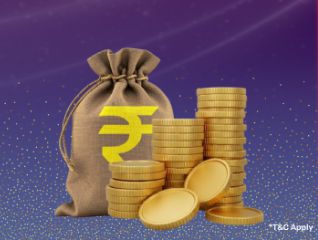Will Gold Rates Increase in the Coming Days in India
Why is the gold rate increasing in India?
The gold rate in India has witnessed a consistent upward trend, shaped by a combination of global developments and domestic demand patterns. Heightened global uncertainty, such as geopolitical tensions and volatile market movements, has pushed investors towards gold as a dependable store of value. In India, the demand for gold tends to surge during the festive and wedding seasons, as households and jewellers begin purchasing in larger quantities, further pushing up prices. Additionally, inflation erodes the value of money, and when the Indian rupee weakens against the US dollar, the cost of importing gold rises, thereby driving domestic prices higher. As gold is predominantly imported, any increase in international gold prices or currency depreciation directly impacts its local valuation. During periods of economic slowdown or market instability, gold continues to appeal to investors for its long-standing reputation as a safe asset. This sustained interest, from both traditional buyers and financial investors, contributes to the rising gold price trend.
What are the main factors causing gold prices to rise?
Gold prices often fluctuate due to a combination of global trends and local influences, making it important to understand the key factors that drive these changes.
- Global uncertainty: Political conflicts, economic downturns, and financial instability increase gold’s appeal as a safe-haven asset.
- Seasonal demand in India: Festivals like Diwali and wedding seasons significantly boost local demand for gold.
- Inflation hedge: As inflation rises, investors turn to gold to preserve value, increasing its demand.
- Rupee depreciation: A weaker Indian rupee makes gold imports costlier, pushing domestic gold prices higher.
- Central bank purchases: Global central banks buy gold to diversify their reserves, influencing global demand.
- Investment demand: In uncertain markets, both retail and institutional investors increase gold purchases, raising prices.
What is the relationship between the global economy and rising gold rates?
Gold prices are intricately linked to the state of the global economy. During periods of economic downturn, investors often turn to gold as a stable and reliable store of value. For example, during the 2008 financial crisis and the COVID-19 pandemic, global demand for gold surged as investors sought safe investments. Additionally, when the US dollar weakens, it generally leads to higher gold prices since gold is dollar-denominated, making it cheaper for holders of other currencies. Inflation in major economies also plays a role: as prices rise, people and institutions move towards gold as a hedge against devaluation. Central banks, too, accumulate gold in uncertain times, which can impact prices worldwide. Thus, a struggling global economy often leads to rising gold rates, reflecting investor caution and a preference for safe-haven assets.
Pro tip: Do not let your jewellery sit idle—tap into its value with a gold loan that suits your needs. Check your gold loan eligibility today!
What influences gold rate changes?
Gold rate changes are influenced by a multitude of factors spanning global economics, geopolitical tensions, and market sentiment. Economic indicators like inflation, interest rates, and currency values play a significant role. Geopolitical events, such as conflicts or trade disputes, can also impact gold prices by affecting investor confidence. Additionally, demand and supply dynamics, including central bank purchases and mining output, contribute to fluctuations. Understanding these intricate influences is crucial for investors and traders to make informed decisions in the volatile gold market.
Expert predictions for gold price trends
Given the uncertainties surrounding global economies and ongoing geopolitical tensions, many analysts predict upward trends in gold prices. Factors such as inflationary pressures, low-interest rates, and increased demand for safe-haven assets are expected to support gold prices in the coming days. Moreover, the potential for further monetary stimulus measures by central banks could further bolster gold's appeal as a hedge against currency devaluation. While short-term fluctuations may occur, the overall outlook for gold prices appears bullish amidst prevailing market conditions.
Why gold price is rising: Understanding economic factors
Gold prices are not random; they are shaped by a combination of key economic signals and global events that influence investor behaviour and market demand.
- Inflation: When inflation rises, the value of currency decreases, prompting investors to turn to gold as a hedge, thereby increasing its demand and price.
- Interest rates: Lower interest rates reduce the opportunity cost of holding non-yielding assets like gold, often leading to higher gold demand.
- Currency strength: A weakening currency, especially the Indian rupee against the US dollar, makes gold imports costlier, pushing up domestic prices.
- Economic uncertainty: During financial instability or economic downturns, investors seek safety in gold, which boosts its price.
- Geopolitical tensions: Events such as wars or global conflicts cause market volatility, increasing gold’s appeal as a stable investment.
- Stock market fluctuations: When equity markets become unpredictable or bearish, investors move towards gold, raising its demand.
- Central bank policies: Measures like quantitative easing or large-scale gold purchases by central banks influence global gold rates.
- Investor sentiment: Overall market confidence and speculative activities also impact short-term gold price trends.
- Global demand and supply: Mining outputs, import-export dynamics, and consumption patterns contribute to pricing shifts.
Monitoring these factors helps investors and traders make informed decisions and strategise better based on expected gold rate movements.
Factors that could raise gold prices
Several factors could potentially raise gold prices in the coming days.
- Geopolitical tensions: Ongoing geopolitical uncertainties worldwide may drive investors toward safe-haven assets like gold, increasing its demand and subsequently its price.
- Inflationary pressures: Expansive monetary policies adopted by central banks can lead to inflationary pressures, making gold more attractive as a hedge against currency devaluation.
- Supply chain disruptions: Any disruptions in the global supply chain, such as mining operations or logistical issues, could lead to a decrease in gold supply, resulting in higher prices.
- Economic uncertainties: Uncertainties in global economic conditions, such as trade disputes or recessions, may prompt investors to seek refuge in gold, boosting its demand and price.
- Currency devaluation: Depreciation of major currencies against gold can increase the metal's value as an alternative store of wealth, driving up its price.
By considering these factors, investors can anticipate potential increases in gold rates and adjust their investment portfolios accordingly.
Impact of interest rates on gold prices
Typically, rising interest rates tend to have an inverse effect on gold prices. This is because when interest rates climb, interest-bearing assets such as fixed deposits and government bonds become more appealing to investors. These financial instruments offer a regular return in the form of interest, making them a preferred choice for those seeking income from their investments. In contrast, gold does not yield any interest or dividends; it is a non-yielding asset. Therefore, in an environment of rising interest rates, investors may shift their money away from gold and into more profitable instruments, leading to a decline in the demand for gold. Naturally, as demand drops, so too may the price of gold.
However, this trend does not always follow a strict pattern. During periods of extreme economic uncertainty or geopolitical unrest, gold retains its position as a reliable and safe-haven asset. Even in a high-interest-rate environment, if investors are concerned about inflation, market volatility, or currency fluctuations, they may continue to turn to gold as a secure store of value. This safe-haven demand can help stabilise or even increase gold prices despite rising rates.
For individuals planning to take a gold loan, understanding the effect of interest rate movements is equally important. A higher market interest rate can lead to increased gold loan interest rates, thereby raising the overall cost of borrowing. This can affect the total repayment amount and the affordability of the loan. Before applying for an online gold loan, it is advisable to check the prevailing gold loan interest rate. Doing so will provide clarity on how much you will pay over the loan tenure and help you decide whether it is the right time to borrow against your gold assets.
It takes just 2 steps to check your eligibility for a Bajaj Finserv Gold Loan. Enter your mobile number now.
Rupee vs Dollar – Currency effect on gold rate
The gold rate in India is closely tied to the exchange rate between the Indian rupee and the US dollar. Since India imports most of its gold, any weakening of the rupee against the dollar makes gold imports more expensive, pushing up domestic gold prices. This currency interplay becomes crucial during global market volatility or economic shifts. Even if international gold prices remain stable, a falling rupee can lead to a rise in local gold prices. Therefore, investors and borrowers alike must watch currency trends to anticipate potential movements in gold rates.
Key points:
- Gold is traded globally in US dollars.
- A weaker rupee increases the cost of gold imports.
- A stronger dollar leads to higher domestic gold prices.
- Currency fluctuations impact both gold investors and gold loan borrowers.
- Monitoring the rupee-dollar rate helps predict changes in Indian gold rates.
How does the stock market's performance affect gold prices?
Gold prices and stock market performance often have an inverse relationship. When the stock market performs well, investors are more likely to put their money into equities, which can reduce demand for gold as a safe asset, leading to lower prices. Conversely, during market downturns or periods of economic instability, investors tend to seek the relative safety of gold, driving its price up as demand increases. This “flight to safety” is common during market volatility, as gold provides stability when equity markets are uncertain. Thus, gold prices often rise when stock markets experience turbulence, reflecting investor caution and preference for stability over risk.
How gold price surges impact the loan to value ratio
When gold prices experience a significant rise, the loan-to-value (LTV) ratio on a gold loan can become especially beneficial for borrowers. The LTV ratio refers to the maximum percentage of the pledged gold’s value that a lender is willing to disburse as a loan. In India, most lenders offer up to 75% of the current market value of 18 to 22 karat gold as per RBI guidelines. This means that during periods of elevated gold prices, borrowers can secure a higher gold loan amount for the same weight and purity of gold jewellery. For example, if gold prices increase by 10%, the eligible loan amount may also rise proportionately, offering greater liquidity without needing to pledge additional gold.
However, it is important to note that individual lenders may apply slightly different LTV interpretations based on their internal policies, risk appetite, and prevailing market conditions. Some may offer slightly lower LTVs to manage risk, especially in times of price volatility. Therefore, borrowers should compare offerings from multiple lenders, considering not just the LTV but also the gold loan interest rate, tenure, processing fees, and repayment flexibility. Evaluating these aspects carefully ensures you get the maximum value and favourable terms for your online gold loan.
Calculating gold loan amount when gold rates are high
High gold rates can increase the eligible loan amount for borrowers seeking a gold loan. The loan amount is typically calculated by applying the lender's loan-to-value (LTV) ratio to the current market value of the gold you pledge. During periods of elevated gold prices, the same amount of gold jewellery or bars can fetch a higher loan amount. Borrowers can use a gold loan calculator to determine the precise amount they’re eligible for based on real-time gold rates, making it easier to plan financial requirements. This tool simplifies the process, ensuring that borrowers are well-informed about their loan potential during price peaks.
Will gold loan interest rates change with rising gold prices?
Gold loan interest rates generally do not fluctuate directly with changes in gold prices. Instead, these rates are more influenced by market liquidity, inflation, and central bank policies. However, lenders may adjust their interest rates indirectly due to changing risk assessments and demand for gold loans during price fluctuations. In times of economic uncertainty, when gold prices surge and demand for gold loans rises, lenders may reassess the interest rates to balance risk. Nevertheless, for borrowers, the immediate impact of rising gold prices is usually felt in the loan amount they can secure rather than in the interest rates, which are often fixed for the loan term.
Conclusion
In conclusion, the outlook for gold rates in the coming days appears to be influenced by a combination of economic factors and market dynamics. While short-term fluctuations may occur due to various geopolitical events and investor sentiment, the overall trend suggests a potential increase in gold prices. Factors such as economic uncertainties, inflationary pressures, and geopolitical tensions are expected to support gold's status as a safe-haven asset, driving up its demand and price. Therefore, investors should closely monitor these factors and consider incorporating gold into their investment portfolios to hedge against market volatility and preserve wealth in uncertain times.
Ready to unlock the value of your gold? Apply for Bajaj Finserv Gold Loan today.
Related Articles
Disclaimer
Bajaj Finance Limited has the sole and absolute discretion, without assigning any reason to accept or reject any application. Terms and conditions apply*.
For customer support, call Personal Loan IVR: 7757 000 000









 Personal Loan
Personal Loan Check Eligibility
Check Eligibility Salaried Personal Loan
Salaried Personal Loan EMI Calculator
EMI Calculator Account Aggregator
Account Aggregator Credit Pulse Report
Credit Pulse Report
 Deals starting @99
Deals starting @99 Min. 50% off
Min. 50% off
 Bajaj Pay
Bajaj Pay Wallet to Bank
Wallet to Bank
 Easy EMI Loan
Easy EMI Loan Savings Offer
Savings Offer Smartphones
Smartphones Led TVs
Led TVs Washing Machines
Washing Machines Laptops
Laptops Refrigerators
Refrigerators Air Conditioner
Air Conditioner Air Coolers
Air Coolers
 Loan Against Shares
Loan Against Shares Loan Against Mutual Funds
Loan Against Mutual Funds Loan Against Insurance Policy
Loan Against Insurance Policy ESOP Financing
ESOP Financing Easy EMI Loan
Easy EMI Loan Two-wheeler Loan
Two-wheeler Loan Loan for Lawyer
Loan for Lawyer Industrial Equipment Finance
Industrial Equipment Finance Industrial Equipment Balance Transfer
Industrial Equipment Balance Transfer Industrial Equipment Refinance
Industrial Equipment Refinance Personal Loan Branch Locator
Personal Loan Branch Locator Used Tractor Loan
Used Tractor Loan Loan Against Tractor
Loan Against Tractor Tractor Loan Balance Transfer
Tractor Loan Balance Transfer Flexi
Flexi View All
View All
 Two-wheeler Loan
Two-wheeler Loan Bike
Bike Scooter
Scooter Electric Vehicle
Electric Vehicle Best Sellers
Best Sellers Popular Brands
Popular Brands

 Trading Account
Trading Account Open Demat Account
Open Demat Account Margin Trading Financing
Margin Trading Financing Share Market
Share Market Invest in IPO
Invest in IPO All stocks
All stocks Top gainers
Top gainers Top losers
Top losers 52 week high
52 week high 52 week low
52 week low Loan against shares
Loan against shares
 Home Loan
Home Loan Transfer your existing Home loan
Transfer your existing Home loan Loan against Property
Loan against Property Home Loan for Salaried
Home Loan for Salaried Home loan for self employed
Home loan for self employed Loan Against Property Balance Transfer
Loan Against Property Balance Transfer Home Loan EMI Calculator
Home Loan EMI Calculator Home Loan eligibility calculator
Home Loan eligibility calculator Home Loan balance transfer
Home Loan balance transfer View All
View All
 Term Life Insurance
Term Life Insurance ULIP Plan
ULIP Plan Savings Plan
Savings Plan Family Insurance
Family Insurance Senior Citizen Health Insurance
Senior Citizen Health Insurance Critical Illness Insurance
Critical Illness Insurance Child Health Insurance
Child Health Insurance Pregnancy and Maternity Health Insurance
Pregnancy and Maternity Health Insurance Individual Health Insurance
Individual Health Insurance Low Income Health Insurance
Low Income Health Insurance Student Health Insurance
Student Health Insurance Group Health Insurance
Group Health Insurance Retirement Plans
Retirement Plans Child Plans
Child Plans Investment Plans
Investment Plans
 Business Loan
Business Loan Secured Business Loan
Secured Business Loan Loan against property
Loan against property Loans against property balance transfer
Loans against property balance transfer Loan against shares
Loan against shares Home Loan
Home Loan Loans against mutual funds
Loans against mutual funds Loan against bonds
Loan against bonds Loan against insurance policy
Loan against insurance policy
 Apply for Gold Loan
Apply for Gold Loan Transfer your Gold Loan with Us
Transfer your Gold Loan with Us Gold Loan Branch Locator
Gold Loan Branch Locator
 ULIP Plan
ULIP Plan Savings Plan
Savings Plan Retirement Plans
Retirement Plans Child Plans
Child Plans Free Demat Account
Free Demat Account Invest in Stocks
Invest in Stocks Invest in IPO
Invest in IPO Margin Trading Facility
Margin Trading Facility Fixed Deposit Branch Locator
Fixed Deposit Branch Locator
 Check your Credit Score
Check your Credit Score
 New Car Loan
New Car Loan Used Car Loan
Used Car Loan Loan Against Car
Loan Against Car Car Loan Balance Transfer and Top-up
Car Loan Balance Transfer and Top-up
 Get Bajaj Prime
Get Bajaj Prime
 Mobiles on EMI
Mobiles on EMI Electronics on EMI Offer
Electronics on EMI Offer  Iphone on EMI
Iphone on EMI LED TV on EMI
LED TV on EMI Refrigerator on EMI
Refrigerator on EMI Laptop on EMI
Laptop on EMI Kitchen appliances on EMI
Kitchen appliances on EMI Washing machines
Washing machines
 Personal Loan EMI Calculator
Personal Loan EMI Calculator Personal Loan Eligibility Calculator
Personal Loan Eligibility Calculator Home Loan EMI Calculator
Home Loan EMI Calculator Home Loan Eligibility Calculator
Home Loan Eligibility Calculator Good & Service Tax (GST) Calculator
Good & Service Tax (GST) Calculator Flexi Day Wise Interest Calculator
Flexi Day Wise Interest Calculator Flexi Transaction Calculator
Flexi Transaction Calculator Secured Business Loan Eligibility Calculator
Secured Business Loan Eligibility Calculator Fixed Deposits Interest Calculator
Fixed Deposits Interest Calculator Two wheeler Loan EMI Calculator
Two wheeler Loan EMI Calculator New Car Loan EMI Calculator
New Car Loan EMI Calculator Used Car Loan EMI Calculator
Used Car Loan EMI Calculator All Calculator
All Calculator Used Tractor Loan EMI Calculator
Used Tractor Loan EMI Calculator
 Hot Deals
Hot Deals Clearance Sale
Clearance Sale Kitchen Appliances
Kitchen Appliances Tyres
Tyres Camera & Accessories
Camera & Accessories Mattresses
Mattresses Furniture
Furniture Watches
Watches Music & Audio
Music & Audio Cycles
Cycles Mixer & Grinder
Mixer & Grinder Luggage & Travel
Luggage & Travel Fitness Equipment
Fitness Equipment Fans
Fans
 Personal Loan for Doctors
Personal Loan for Doctors Business loan for Doctors
Business loan for Doctors Home Loan
Home Loan Secured Business Loan
Secured Business Loan Loan against property
Loan against property Secured Business Loan Balance Transfer
Secured Business Loan Balance Transfer Loan against share
Loan against share Gold Loan
Gold Loan Medical Equipment Finance
Medical Equipment Finance
 Engagement Zone
Engagement Zone Game Zone
Game Zone
 Savings Offer
Savings Offer Easy EMI
Easy EMI Offer World
Offer World 1 EMI OFF
1 EMI OFF New Launches
New Launches Zero Down Payment
Zero Down Payment Clearance Sale
Clearance Sale Bajaj Mall Sale
Bajaj Mall Sale
 Mobiles under ₹20,000
Mobiles under ₹20,000 Mobiles under ₹25,000
Mobiles under ₹25,000 Mobiles under ₹30,000
Mobiles under ₹30,000 Mobiles under ₹35,000
Mobiles under ₹35,000 Mobiles under ₹40,000
Mobiles under ₹40,000 Mobiles under ₹50,000
Mobiles under ₹50,000
 Articles
Articles
 Overdue Payments
Overdue Payments Other Payments
Other Payments
 Document Center
Document Center Bank details & Documents
Bank details & Documents Tax Invoice Certificate
Tax Invoice Certificate
 Do Not Call Service
Do Not Call Service
 Hamara Mall Orders
Hamara Mall Orders

 Fixed Deposit (IFA) Partner
Fixed Deposit (IFA) Partner Loan (DSA) Partner
Loan (DSA) Partner Debt Management Partner
Debt Management Partner EMI Network Partner
EMI Network Partner Became a Merchant
Became a Merchant Partner Sign-in
Partner Sign-in
 Mobiles on EMI
Mobiles on EMI Trade directly with your Demat A/c
Trade directly with your Demat A/c ITR
ITR My Garage
My Garage
 Live Videos - Beta
Live Videos - Beta
 Savings Offer
Savings Offer Smartphones
Smartphones LED TVs
LED TVs Washing Machines
Washing Machines Laptops
Laptops Refrigerators
Refrigerators Air Conditioners
Air Conditioners Air Coolers
Air Coolers Water Purifiers
Water Purifiers Tablets
Tablets Kitchen Appliances
Kitchen Appliances Mattresses
Mattresses Furniture
Furniture Music and Audio
Music and Audio Cameras & Accessories
Cameras & Accessories Cycle
Cycle Watches
Watches Tyres
Tyres Luggage & Travel
Luggage & Travel Fitness Equipment
Fitness Equipment Tractor
Tractor Easy EMI Loan
Easy EMI Loan
 vivo Mobiles
vivo Mobiles OPPO Mobiles
OPPO Mobiles Xiaomi Mobiles
Xiaomi Mobiles Sony LED TVs
Sony LED TVs Samsung LED TVs
Samsung LED TVs LG LED TVs
LG LED TVs Haier LED TVs
Haier LED TVs Godrej Refrigerators
Godrej Refrigerators Voltas Washing Machines
Voltas Washing Machines
 New Tractor Loan
New Tractor Loan Used Tractor Loan
Used Tractor Loan Loan Against Tractor
Loan Against Tractor Tractor Loan Balance Transfer
Tractor Loan Balance Transfer



